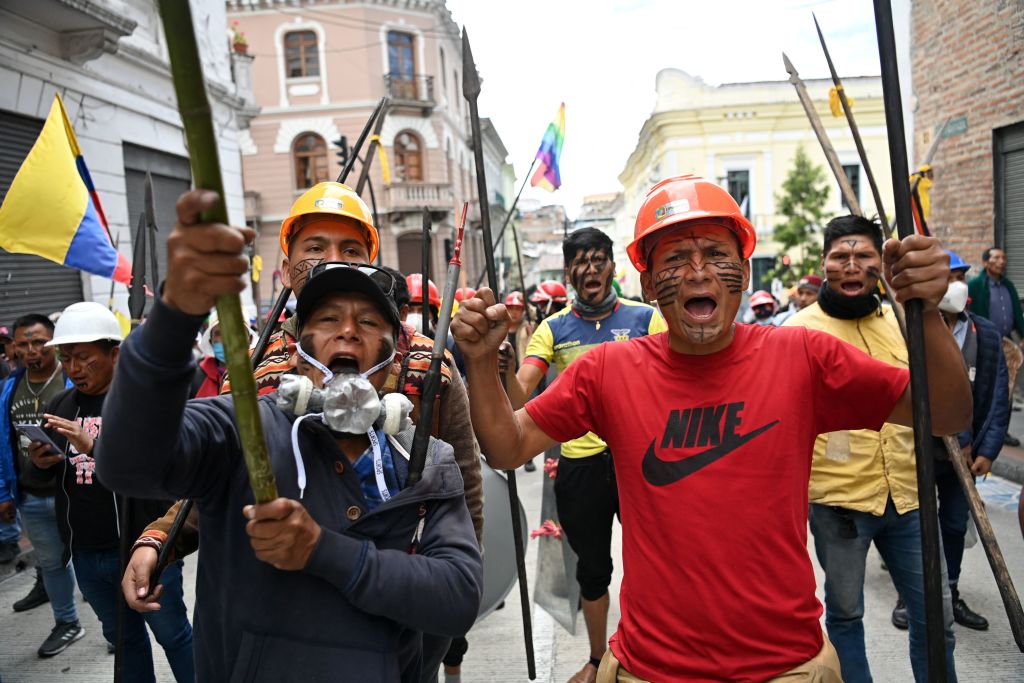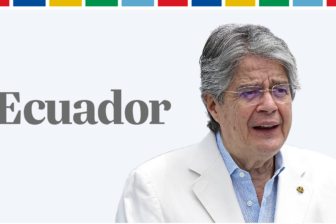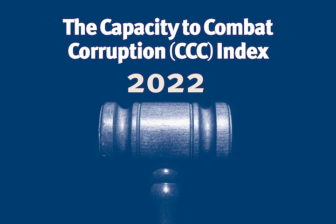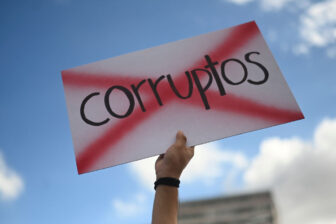QUITO — On June 13, nationwide, indigenous-led protests against Guillermo Lasso’s government began in Ecuador with demonstrations and blockades across the highland and Amazon regions. Now, two weeks later, the “national strike” has not fully ceased, with CONAIE, the national indigenous movement, insisting on multiple demands for the government including price controls for agricultural products and increases to fuel subsidies. Demonstrators have blocked roads, causing shortages and soaring prices for gasoline, food and household gas. What do the protests mean for a struggling Lasso administration?
Two weeks of protest have caused significant economic losses and Ecuador’s country risk has shot up by over 200 points, surpassing 1,000 to register its highest level of Lasso’s presidency. Daily oil production has been cut in half due as protestors occupy oil fields or block access. Politically, the government will emerge from the protests much weaker after likely making significant concessions to CONAIE. The government has already made concessions worth $600 million and revoked the state of emergency over the weekend, in order to facilitate a negotiated agreement.
While inflation and energy shocks have played a role in triggering the protests, the deterioration of the social and political scenario in Ecuador was to be expected—if not quite so early in Lasso’s term. The underlying drivers of violent protests that hit the country in October 2019, inequality and stagnating living conditions, have not disappeared. Instead, the pandemic exacerbated them.
Meanwhile, the Lasso administration entered office with a very weak mandate, and its inconsistent political handling of the relationship with Congress and social groups has added to the president’s declining approval ratings. This, along with rising violent crime and deficient public services, is to blame for the arrival of a crisis just a little over a year after his inauguration.
But things could be worse—as Ecuador’s recent history shows. In 2019, protests exploded immediately in response to the announcement that fuel subsidies would be eliminated and Lasso’s predecessor, Lenín Moreno, was temporarily forced to flee Quito. This time around, the protests weren’t triggered by any single policy change or event—and that has limited the active participation of other political groups besides CONAIE. Furthermore, transportation unions have not gotten involved, curbing disruption around the country. Finally, the already limited support for the protests in Quito is decreasing as shortages have accumulated and protests prevent businesses from operating and informal workers from gaining a living. Many quiteños have protested against CONAIE’s demonstrations.
Still, Lasso has few good options going forward. One is snap presidential and legislative elections, which Lasso can call through a never-before used constitutional provision known as the muerte cruzada. This option had been previously discussed by the Lasso administration, in the context of congressional obstruction to its reforms. But as Lasso’s popularity has fallen, it has become less appealing, considering that there is no guarantee that he could keep his job, nor that his CREO party would increase its number of seats in the National Assembly.
For segments of the opposition, led by the UNES bloc of representatives aligned with the correísta movement of former President Rafael Correa, the idea of an early election is now more appealing. On June 25, UNES representatives put forward an impeachment motion against President Lasso, in the hope that this will pressure the government to jump before it is pushed and invoke the muerte cruzada. But it’s unclear that UNES, with its 47 seats, will be able to convince enough members of other blocs to reach the 92 vote threshold and impeach Lasso.
Even if snap elections are avoided, Lasso looks set to become a lame-duck president just a year into his term, unable to advance his economic liberalization agenda and held hostage to the demands of other veto players in the country, as the current protests seem likely to illustrate. If the votes in favor of impeachment this week are close to the 92-vote threshold, this would signal consolidated opposition in Congress that will likely continue to undermine the Lasso administration, perhaps even reversing some of its policies—all of which makes for a very unstable political scenario going forward.
Whichever option he takes, the rest of Lasso’s term will be a far cry from the optimistic vision that he presented to the electorate in the 2021 elections. Gone is what many international observers saw as the last outpost of center-right balance in a politically unsettled region.
—
Hurtado is president of Prófitas, a political risk consultancy.









